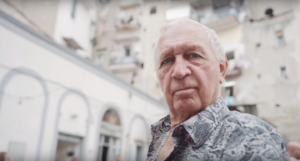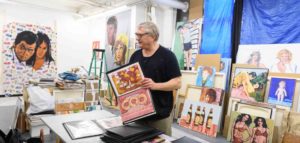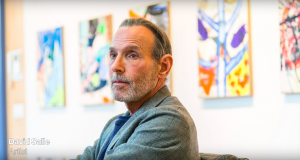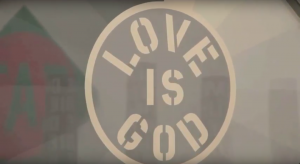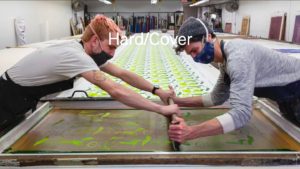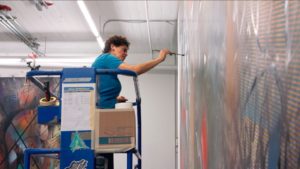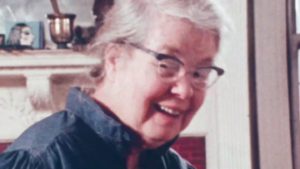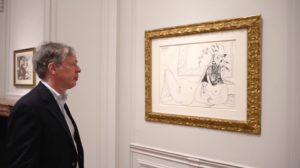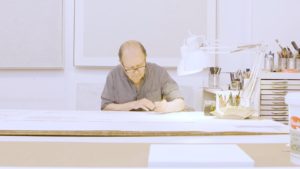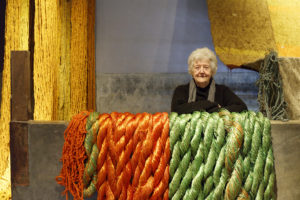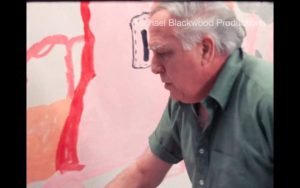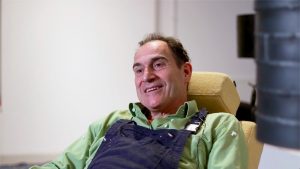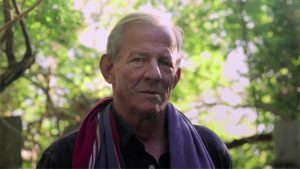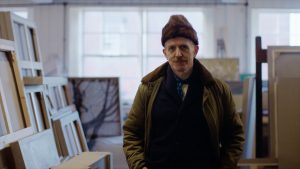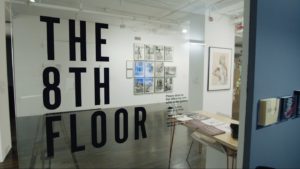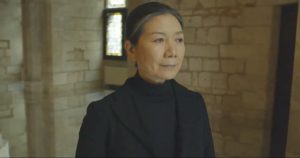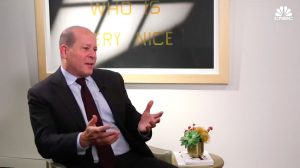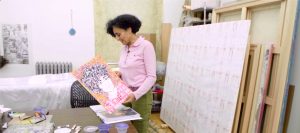
“A part of how I work, in using color to visualize narratives of public concern, is using archival photography and contemporary photography, breaking them down into halftone lines, and creating visual circumstances in which they become collapsed – the histories literally collapse.” —Tomashi Jackson
Continuing to follow the Whitney Biennial, here we have the second of five studio visits they did with Biennial artists in the lead-up to this year’s exhibition, this one with Brooklyn, New York-based Tomashi Jackson.
Jackson (b. 1980, Houston, TX) is a multimedia artist whose works interweave textiles, painting, video, and sculpture to explore the ways in which color theory can inform – and has been impacted by – issues of class and race. In this video by Sandenwolff Productions, Jackson describes how she uses elements of collage and color theory to develop her densely layered works of social commentary and insight. We watch as she works in her studio on pieces for the Biennial and researches Seneca Village (the Black community that was razed in the 1850s to clear land for Central Park) to incorporate into the work.


